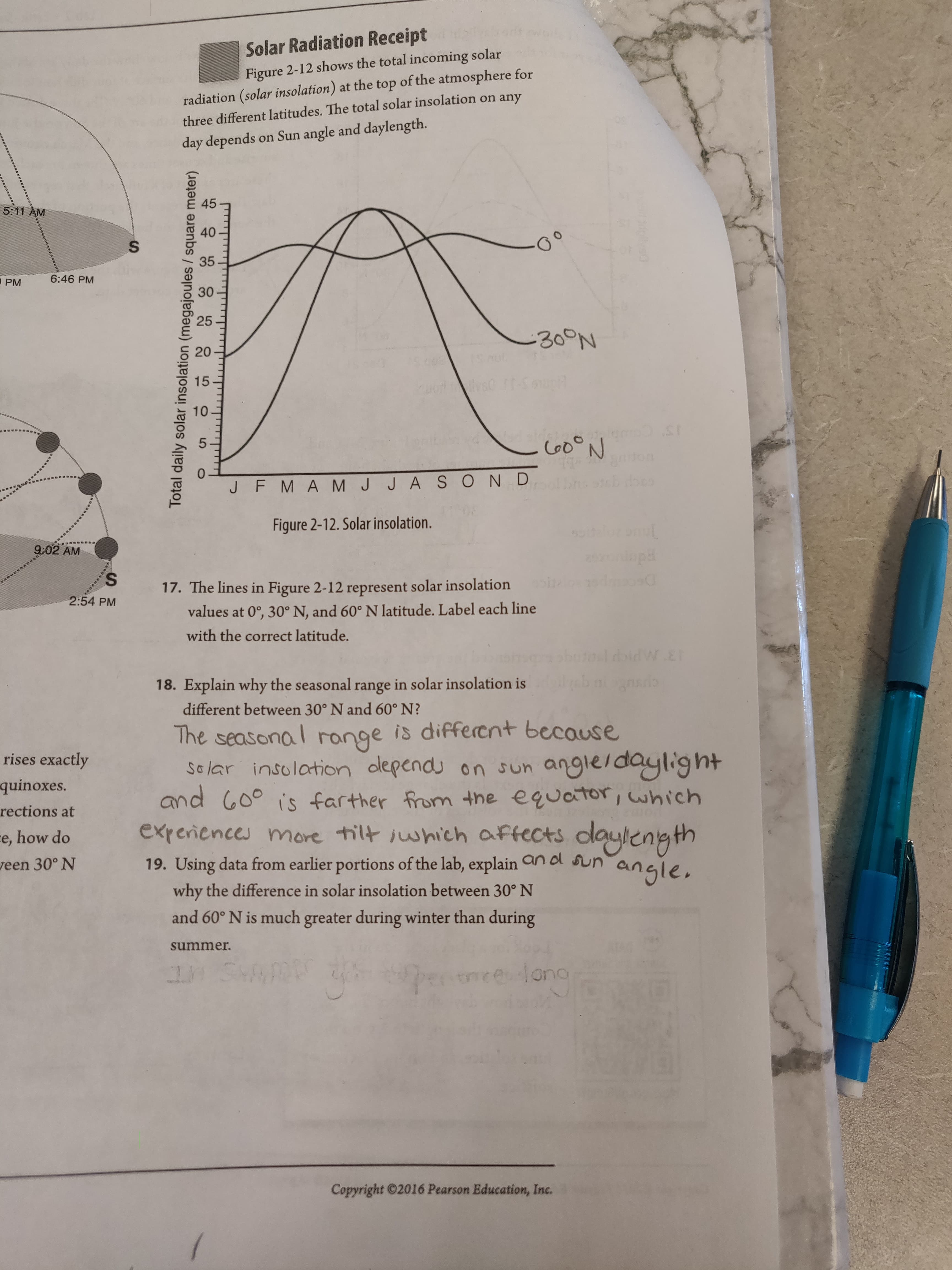Solar Radiation Receipt Figure 2-12 shows the total incoming solar radiation (solar insolation) at the top of the atmosphere for three different latitudes. The total solar insolation on any day depends on Sun angle and daylength. 45 5:11 AM 40 35 6:46 PM PM 30 25 30°N 20 15 olvs ff-sSuph 10 Coo S don docs J F MAM J JA S OND Figure 2-12. Solar insolation. ,0tt lor enul eoniopd 1dmoos 9:02 AM 17. The lines in Figure 2-12 represent solar insolation values at 0°, 30° N, and 60° N latitude. Label each line 2:54 PM with the correct latitude. onasd doid W.& ansib 18. Explain why the seasonal range in solar insolation is different between 30° N and 60° N? The seasonal range is diffeent because Sclar insolation and Go0 is farther from the eguatorIwhich experiences more tilt juwhich offects dlaylength 19. Using data from earlier portions of the lab, explain an dl sun angle. rises exactly dlependu on sun angieidaylight quinoxes. rections at e, how do een 30° N why the difference in solar insolation between 30° N and 60° N is much greater during winter than during summer. oneedono Copyright ©2016 Pearson Education, Inc. O LO Total daily solar insolation (megajoules/ square meter) N CS
Energy transfer
The flow of energy from one region to another region is referred to as energy transfer. Since energy is quantitative; it must be transferred to a body or a material to work or to heat the system.
Molar Specific Heat
Heat capacity is the amount of heat energy absorbed or released by a chemical substance per the change in temperature of that substance. The change in heat is also called enthalpy. The SI unit of heat capacity is Joules per Kelvin, which is (J K-1)
Thermal Properties of Matter
Thermal energy is described as one of the form of heat energy which flows from one body of higher temperature to the other with the lower temperature when these two bodies are placed in contact to each other. Heat is described as the form of energy which is transferred between the two systems or in between the systems and their surrounding by the virtue of difference in temperature. Calorimetry is that branch of science which helps in measuring the changes which are taking place in the heat energy of a given body.
Number 19. using data from earlier portions of the lab, explain why the difference in solar insolation between 30°N and 60° N is much greater during winter than during Summer. Exercises for Weather and Climate 9th edition

Trending now
This is a popular solution!
Step by step
Solved in 4 steps


